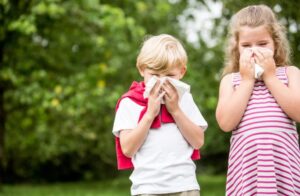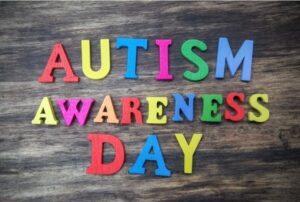Every year during flu season, parents face a common challenge: is their child suffering from the flu, or have they been infected with another respiratory virus? Influenza, Mycoplasma pneumonia, COVID-19, adenovirus, Group A Streptococcus, and other infections all present with similar early symptoms, such as high fever and cough, making it difficult for parents to distinguish between them. Accurate diagnosis is critical for effective treatment, so understanding the differences between the flu and other respiratory infections is essential for parents.
Symptoms Comparison: Influenza vs Other Respiratory Viruses
During peak flu season, it's important for parents to have a basic understanding of the typical symptoms of different viruses. Below is a comparison of the symptoms of several common respiratory infections:
1. Influenza:
Influenza often presents with sudden high fever, body aches, chills, and fatigue, while respiratory symptoms such as coughing and runny nose are usually milder. Children infected with the flu often experience a feeling of general discomfort and weakness.
2. Mycoplasma Pneumonia:
The main symptoms of Mycoplasma pneumonia are fever and persistent dry cough. Unlike influenza, Mycoplasma pneumonia typically does not cause severe systemic symptoms like muscle aches or chills.
3. Adenovirus Infection:
Adenovirus infection usually presents with fever, and some children may also develop conjunctivitis (red eyes). Adenovirus can also cause upper respiratory tract infections, so its symptoms may overlap with the flu.
4. Group A Streptococcus Infection:
Group A Streptococcus infections often cause fever, tonsil pus formation, and a sore throat. Children may experience difficulty swallowing or intense throat pain. This differs from the sore throat in flu, as Group A Streptococcus infections are more likely to cause pus-forming tonsillitis.
5. Respiratory Syncytial Virus (RSV):
RSV infection commonly leads to fever and wheezing. Children may show signs of rapid breathing, coughing, and wheezing. Compared to influenza, RSV tends to affect the lower respiratory tract more severely.
Flu's Unique Manifestations
In clinical practice, the flu doesn't always present in the typical way. Symptoms can vary depending on the child's age and individual differences. For example, infants with the flu may primarily show gastrointestinal symptoms, such as nausea, vomiting, and diarrhea, instead of the common high fever and chills, making it difficult to recognize as the flu.
Additionally, some children, due to their physical condition, may not develop a fever when infected with these viruses, instead only showing a persistent cough or wheezing. If the child already has asthma, this situation may be misinterpreted as an asthma flare-up rather than a viral infection.
When to Seek Medical Attention
For children who are in generally good spirits, parents don't need to rush to the doctor right away. During the early stages of illness, symptoms may not fully manifest, and it's difficult to make an accurate diagnosis. It's usually recommended to wait 2-3 days to see if symptoms worsen or change, then consult a doctor if necessary. Parents often have experience with this, and initial blood tests usually don't provide clear indications of the disease.
However, for infants under three months old, or for children who appear lethargic, have no appetite, or exhibit other concerning symptoms, it's advised to seek medical attention promptly.
Treatment and Prevention of Influenza
For children with a known exposure to the flu, taking antiviral medications such as Oseltamivir within 48 hours of symptom onset can help alleviate symptoms and shorten the duration of the illness. Oseltamivir is typically taken for five days, and it’s best used under the guidance of a doctor.
Flu can be classified into four types: A, B, C, and D. The most common and severe types are A and B. It's important to note that there's no complete cross-immunity between A and B influenza viruses, meaning a child who has had the flu may still be susceptible to another type of flu.
Best Ways to Prevent Influenza
Vaccination is the most effective method to prevent influenza. Flu vaccines are updated annually, so children should receive a flu shot each year. In addition to vaccination, parents can reduce the risk of flu infection by following these practices:
- Wash hands frequently, especially after returning from public places.
- Avoid contact with people who are sick, particularly during flu season, and ensure proper ventilation in the home.
- Maintain a healthy lifestyle, including good sleep and a balanced diet, to strengthen the child's immune system.
- Minimize exposure to polluted air in public places, especially during peak flu season.
FAQ - Frequently Asked Questions
1. What’s the difference between the flu and a common cold?
The flu and the common cold have similar symptoms, but the flu tends to be much more severe. Flu usually comes with high fever, body aches, and fatigue, while the common cold primarily causes mild nasal congestion and sore throat, with no fever.
2. How long does it take for a child to recover from the flu?
Generally, flu symptoms will resolve within 3-7 days. If antiviral medication (like Oseltamivir) is taken promptly, recovery can be quicker.
3. How can I tell if my child has the flu or Mycoplasma pneumonia?
Mycoplasma pneumonia typically causes a persistent dry cough, whereas the flu is more likely to present with sudden onset of high fever, body aches, and chills. Although symptoms overlap, the flu often involves more severe systemic symptoms.
4. Should my child get the flu vaccine?
Flu vaccination is highly recommended to prevent flu, especially for high-risk groups such as infants, the elderly, and children with chronic conditions. Getting the flu vaccine annually significantly reduces the risk of infection.
5. When should I take my child to the doctor?
If symptoms persist beyond 48 hours, or if your child shows signs of breathing difficulty, severe cough, or a sore throat, it's time to visit a doctor. Infants under three months old, or children who are lethargic or have no appetite, should also be seen by a healthcare professional.
References
- World Health Organization (WHO). (2023). Influenza.
- Centers for Disease Control and Prevention (CDC). (2023). Flu Symptoms.
- National Health Service (NHS). (2023). Mycoplasma pneumonia in children.
- Mayo Clinic. (2023). Adenovirus infection.
- American Academy of Pediatrics (AAP). (2023). Group A Streptococcus Infections in Children.













